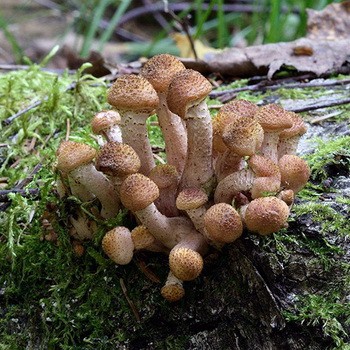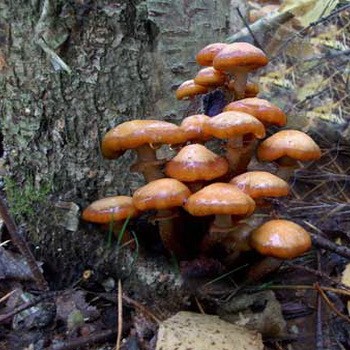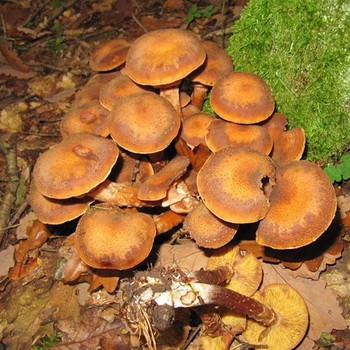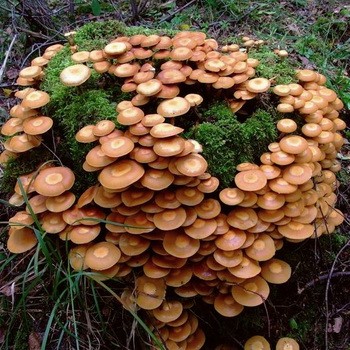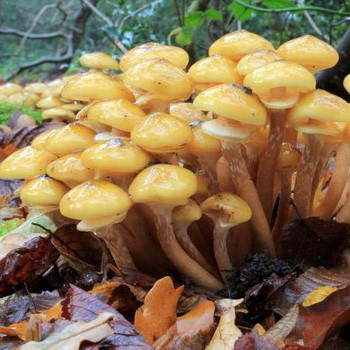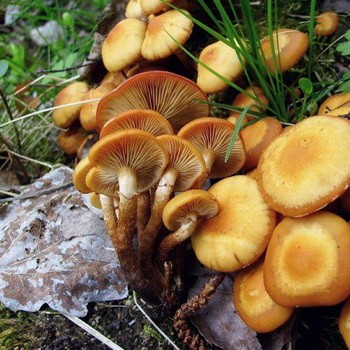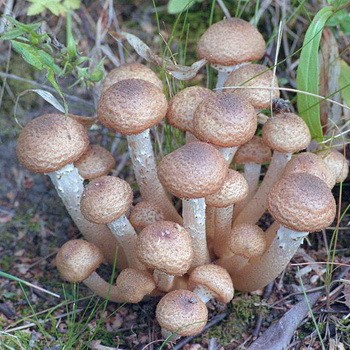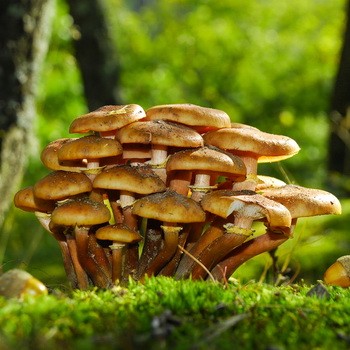Old honey mushrooms: how they look and how to cook
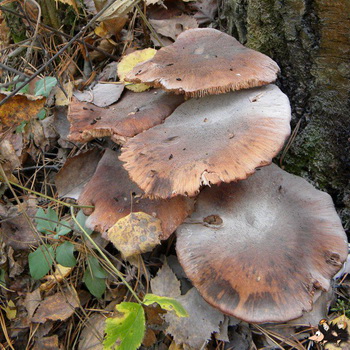
Mostly honey mushrooms are saprophytes and settle on dying trees. However, there are other species that parasitize on healthy living plants, rather quickly destroying them. According to biologists, it is these mushrooms that cause the death of forests. But for fans of "silent hunting" such events are only at hand. In this case, there is an occasion to go to the forest in search of the next mushroom crop.
Sometimes, having come to the gathering place, you can meet a whole "family" of old mushrooms. Many mushroom pickers in frustrated feelings leave such places without taking a single copy in their basket. Often, overgrown mushrooms are thrown away, because their flesh is very hard, and their appearance does not cause appetite at all. In addition, everyone knows that fruiting bodies, like sponges, absorb radiation and salts of heavy metals, and honey mushrooms are no exception. Therefore, the older the mushroom, the more harmful substances it has absorbed from the atmosphere. However, for some mushroom pickers to meet overgrown mushrooms - this is not a reason for sadness.
Content
- What to do with old honey mushrooms and photos, how they look
- Old autumn and summer honey agarics (with photo)
- Is it possible to eat old overgrown mushrooms?
- Is it possible to cook old mushrooms and how to use such pickled mushrooms?
- Is it possible to pickle old mushrooms and a recipe for cooking fried mushrooms
What to do with old honey mushrooms and photos, how they look
Often, old honey agarics are very wormy and have a very unattractive appearance. In this case, such mushrooms really need to be thrown away. However, even among them there are whole and strong “burdocks”. What to do with old mushrooms in this case - take it to the basket or pass by? Very often, many beginner mushroom pickers ask a similar question. As already noted, some lovers of the “silent hunt” do not shun agaric mushrooms, but, on the contrary, gladly take them into their basket. However, before they make sure that the adult copy meets the so-called "quality standards". It should be free from any damage, black spots, as well as signs of worminess. In addition, the place of collection of such mushrooms should take place in an ecologically clean area - away from factories and industrial enterprises.
As experience shows, collecting old mushrooms is possible, but not always. As mentioned above, each instance must meet all the requirements of a strong and attractive mushroom. Unfortunately, most overgrown mushrooms do not fit this description, so mushroom pickers so easily "say goodbye". However, when in front of you you see an adult film quite worthy of organoleptic properties, on which there are no traces of rot, worms, mold and other injuries, you can cut it and put it in a basket.
Mushrooms grow and ripen very quickly, so you do not have time to look around, as they have already outgrown. The following photos will show how old mushrooms look.So, with age, the fruit body changes color to darker shades. In addition, the size and shape of the hat becomes different. We offer you to visually familiarize yourself with the appearance of overgrown mushrooms on the example of summer and autumn species. It is worth noting that adults can easily be confused with false species, so it is very important to know what their appearance is.
Old autumn and summer honey agarics (with photo)
Autumn honey agaric is the most popular among other species. At a young age, it has a convex, unopened hat, which over time opens according to the principle of an umbrella, becomes round and flat, reaching up to 13 cm in diameter. We offer to compare photos of old autumn mushrooms mushrooms with their young "brothers."
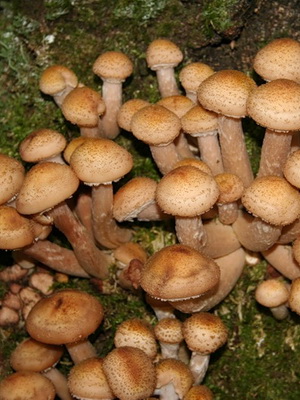
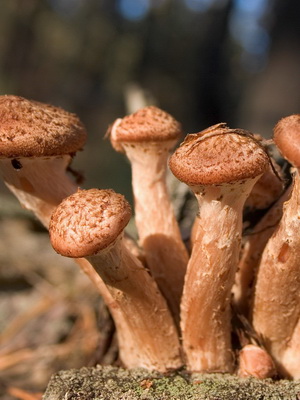
As you can see, the surface of the young mushroom is covered with many light scales, but with age they disappear and the hat becomes completely smooth. If you look under the cap of the “young” honey agaric, you can see that it is covered with a white film. The adult specimen loses this coverlet, leaving only "rags". In addition, on the leg of each edible mushroom there is a ring that almost completely disappears in old individuals.
The color of autumn mushrooms varies depending on the wood on which they grow. Old specimens will always be a little darker than their smaller “colleagues”, including the color of the pulp itself. With age, it changes from whitish-bodily to yellow, sometimes with dark spots. The aroma is pleasant mushroom, although in older individuals - less expressive.
Summer honey agaric is one of the most recognizable species, especially in wet weather. Its smooth, sticky hat, swelling with dampness, has a pronounced two-tone color. A light brown spot can be seen in the center, and a wide brown or brown strip at the edges. In young individuals, the hat is small, hemispherical in shape, with a diameter of 3-7 cm, which, as it grows, grows and becomes flat-convex, up to 10 cm. The photo shows that the old edible mushrooms of this species can even remain without the characteristic ring on the leg that every young specimen has:
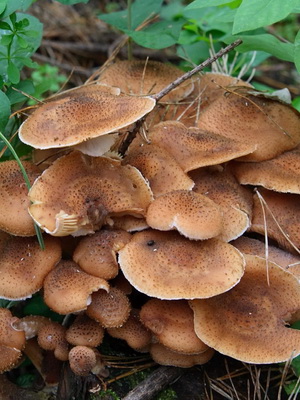

The platelets of hats in young mushrooms are cream-colored, which eventually turn brown. In addition, old summer honey agarics often “sprinkle” the caps of the lower tier mushrooms with a layer of brown spore powder.
In many species of honey agarics, hats are covered with white coating resembling mold. Most likely, this is a spore powder, however, for greater certainty, it is better to smell the mushroom. If it has a pleasant mushroom aroma, then there is nothing dangerous in white coating. However, if the fruiting body gives away mold, then it is better not to take it. Pay special attention to the lower part of the cap of an adult honey agaric - if the plates are moldy and begin to blacken, it is strongly recommended that you leave it in the forest.
Is it possible to eat old overgrown mushrooms?
As you can see, the attitude to such fruiting bodies is ambiguous. In this connection, a completely logical question arises about old overgrown honey mushrooms: is it possible to collect and eat them in the future? I must say that there are no specific frameworks or rules. Some mushroom pickers with experience confidently use such fruiting bodies for preparing various dishes. In their opinion, the caps of these mushrooms are quite edible and even very tasty, while the leg is too stiff, so it is really better to get rid of it.
Is it possible to cook old mushrooms and how to use such pickled mushrooms?
Some mushroom pickers have taken the practice of pickling old mushrooms - can this be done? Yes, if they have good taste. To do this, they must be soaked in salt water, cut into pieces and boil for 20-30 minutes. And how can you use the old pickled mushrooms? In addition to self-starters, they are great as an additional or even main ingredient in various salads.
Is it possible to pickle old mushrooms and a recipe for cooking fried mushrooms
There are few recipes for cooking old mushrooms. Basically, it is mushroom caviar and pastes.As already noted, sometimes they are pickled or dried. However, it should be remembered that the legs of overgrown mushrooms should be removed, leaving only one hat. Is it possible to cook old mushrooms by frying them in a pan? I must say that this is a very popular type of processing of mushroom crops, and some lovers of "silent hunting" are happy to use it in their practice. To do this, they advise cutting the caps of overgrown mushrooms into small pieces and soak in water for 1.5 hours, adding salt to it. Then rinse them under the tap and boil 2 times for 15 minutes, each time changing the water. Then you can safely proceed to frying or stewing.
And how else can you cook old mushrooms? It turns out they can to dryand then add to first courses and sauces. However, in this case, honey mushrooms are not pre-boiled and not soaked in water. These 2 procedures should be carried out with dried fruit bodies as needed.
